The Recommended List: New wheat varieties will broaden options for 2024
Five new varieties of winter wheat have been added to the Agriculture and Horticulture Development Board (AHDB) Recommended List for 2024. These new arrivals offer valuable alternatives for planting next autumn and bring some much-needed diversity to the feed wheat sector, breathing fresh life into the tired looking Group 1 bread-making and Group 3 biscuit markets.
In this blog, I've put together an overview of the key new recommendations and how they might work for your rotation next season.
The end of 'the big three' - new feed wheat options will rival current farm favourites
Autumn 2023 marks the second successive year where feed wheat plantings have been dominated by just three varieties: KWS Dawsum, KWS Extase and Champion.
The big three made up more than 50% of Frontier's seed, with KWS Dawsum likely to make up a quarter of the UK winter wheat area on its own!
For 2024, those of you who don't like putting all your eggs in one basket will be delighted to hear that three new high yielding varieties will be available for drilling next autumn:
- Top-of-the list: Group 4 Hard variety LG Beowulf
- Group 3 variety Bamford
- Group 4 soft variety Blackstone.
More than the sum of its parts – LG Beowulf, the prodigal son
The variety with the broadest appeal is likely to be LG Beowulf. It's a cross between two well-regarded parent varieties, Gleam and Costello.
As the highest yielding wheat in AHDB UK trials - a whisker ahead of LG Redwald and Champion - LG Beowulf has the headline-grabbing output potential that many will look for first. This variety continued that form across five Frontier replicated trial sites for harvest 2023, where it was joint with SY Insitor as the highest yielding.
But yield alone is not enough and as we've seen with KWS Dawsum, many of you may trade a few percentage points of yield for the right mix of agronomic and quality characteristics.
The question is: How does LG Beowulf fare on the key yardsticks of disease resistance, standing strength and grain quality? The table below compares these qualities between LG Beowulf and its parents.
We can see that LG Beowulf combines the best of its parents' characteristics. The excellent grain quality and top-rated resistance to yellow rust from Costello are teamed with the resistance to orange wheat blossom midge and the yield potential from Gleam.
With stiff straw and a moderate speed of development in the autumn, Beowulf will offer the potential for earlier drilling – a topic likely to be on your mind after the dismal drilling conditions seen this October and November. With a similar growth habit to Gleam, Beowulf offers the potential for a wide sowing window and is suited to all soil types and rotational positions.
Whilst there should be a large area of seed crops supplying LG Beowulf to the market next year, this one looks destined to be an early sell-out. We've already seen several hundred tonnes of seed ordered for autumn 2024.
Bamford breaks the biscuit mould
What's better than a high yielding wheat with good disease resistance? How about one that offers the chance of a market premium too?
New Group 3 variety Bamford is just that; it has all the attributes and output of a top-notch feed wheat but with the added potential of a soft wheat premium, qualifying for biscuit grade and the UK's export markets.
After several years of stagnation in the Group 3 sector, Bamford has the goods to freshen up both the biscuit market and soft wheats more widely. Outyielding the next closest Group 3 variety by 6% and leading soft Group 4 feed variety LG Skyscraper by 4%, this is a variety that will appeal throughout England and Scotland.
There's no slouch when it comes to disease resistance either; Bamford was the highest yielding variety in Frontier's zero-fungicide trials last harvest and was only beaten by KWS Extase in the AHDB untreated trials. Team this cleanliness with major genetic resistance to eyespot and in Bamford you have a variety that looks well suited to the tricky second and third cereal position.
If this variety was a regular hard feed wheat, we'd be looking at it for inclusion alongside LG Beowulf, KWS Dawsum and Champion in our ideal rotation next year. But when we add that potential for a commodity premium without any requirement for additional nutrition and management, it may shoot to the top of your shopping list for 2024.
Blackstone – soft wheat with strong attributes
The final feed wheat to draw our attention to is the new Group 4 soft variety, Blackstone. With approval for distilling, this variety offers an alternative to current favourite soft wheat, LG Skyscraper and like Bamford, brings the prospect of a premium with the right regional markets.
The head-to-head with LG Skyscraper above shows Blackstone to be a clear step up, with the best combination of disease resistance and grain quality of all the soft wheat varieties.
Given the reputation that some soft varieties have for sprouting in a wet harvest, Blackstone's high Hagberg falling number should offer reassurance. In fact, there has been no evidence of sprouting at any site, including trials placed in Ireland specifically to test varietal susceptibility to sprouting.
Elsoms, the breeder of Blackstone, believes it will offer one of the widest sowing windows available to wheat growers, suitable for drilling from September through to the end of February. This offers comfort after recent years where autumn sowing plans have turned into spring-sown realities.
Given the dominance of the big three varieties, it's nice to see this cross of Panacea and KWS Tempo bringing some genetic diversity to wheat rotations and expanding the range of options.
Festive 'Cheer' for Group 1 growers
Last but not least, we come to the most welcome addition to the 2024 AHDB Recommended List: a new Group 1 bread-making variety!
Seven long years after the last recommendation of a Group 1 variety, KWS Zyatt, latest addition SY Cheer lives up to its name with the promise of better things ahead.
Given the milling market is all about quality, the good news is that SY Cheer has so far shown a higher specific weight and Hagberg falling number than all the existing Group 1 varieties. It has also returned a protein of 13.0%, just ahead of RGT Skyfall and slightly behind Crusoe. Those results set it firmly amongst the established Group 1 varieties for quality and should offer encouragement that SY Cheer will make the grade when it is submitted to final UK Flour Millers (UKFM) milling tests in the new year.
Whilst outright yield is only a marginal improvement on what we see with RGT Skyfall and Crusoe, it's the untreated yield that sets SY Cheer apart.
9% ahead of Crusoe and a whopping 18% ahead of RGT Skyfall, SY Cheer becomes the cleanest of the Group 1 varieties, which will come as great relief to those of you who have been battling with yellow and brown rust in recent years.
As we wait for the millers to conduct their large-scale testing from harvest 2023, there is every reason to be positive about SY Cheer. With seed crops in the ground for availability next year, keep an eye out for SY Cheer appearing in grain contracts for harvest 2025.
Summary
You'll hear plenty more about these new wheat varieties as we move into 2024, and we'll be paying particular attention to them at our open days in June where you'll be able to see LG Beowulf, Bamford, Blackstone and SY Cheer in the field.
In future posts I'll also be reviewing the latest recommendations for winter barley and winter oilseed rape, including the first BYDV tolerant hybrid barley SY Buzzard and a new leading 2-row barley LG Capitol. Subscribe to our blog to be notified of when we next publish our Recommended List commentary.
In the meantime, speak to your Frontier farm trader or agronomist if you have any questions. Alternatively, you can get in touch or visit our website for more information.
As a subscriber, you’ll receive email alerts each time a new blog is published so you can always stay updated with the latest advice and insights from our experts

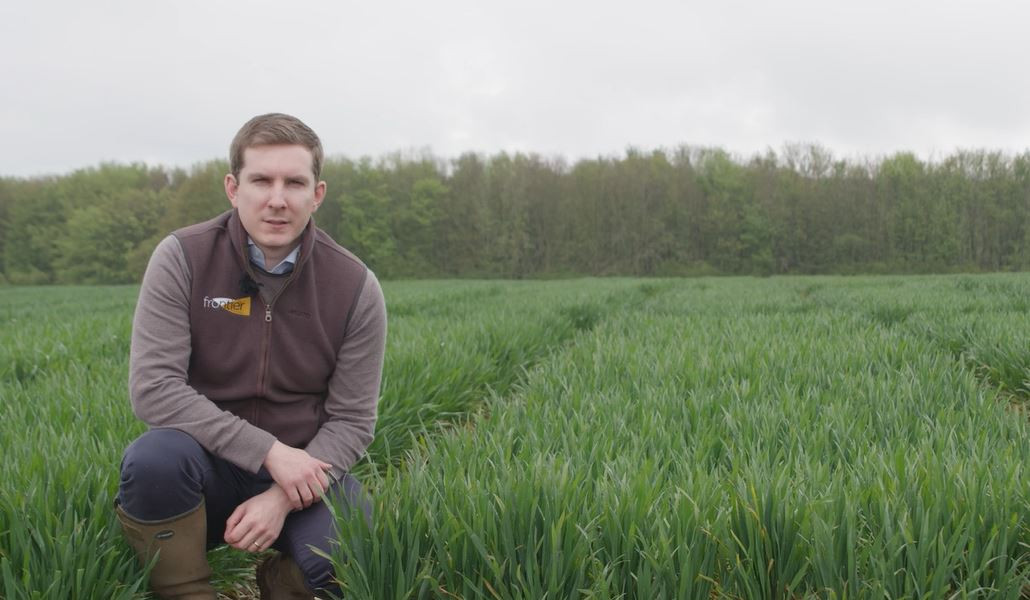
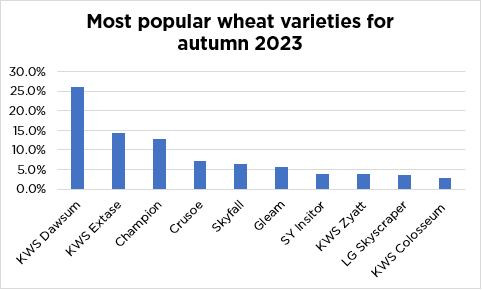
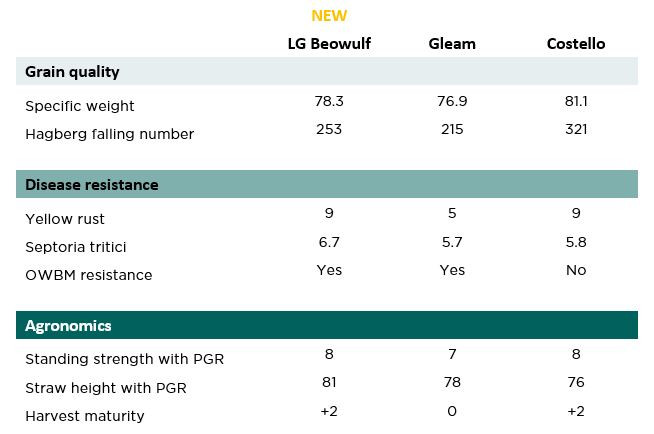

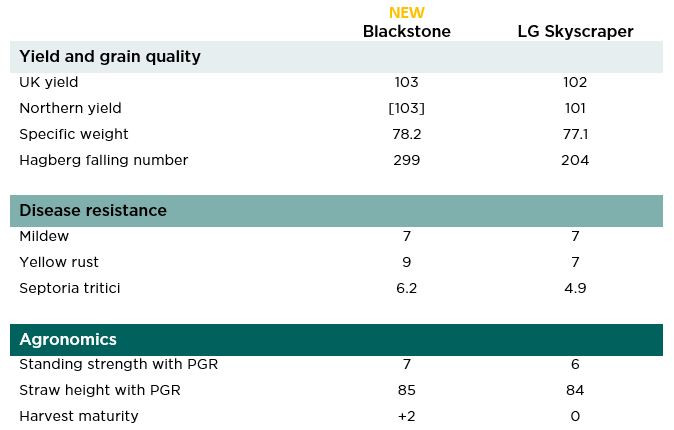
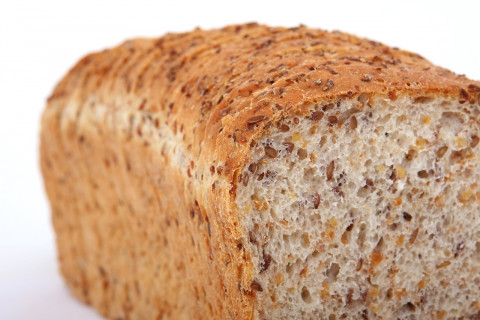


Comments